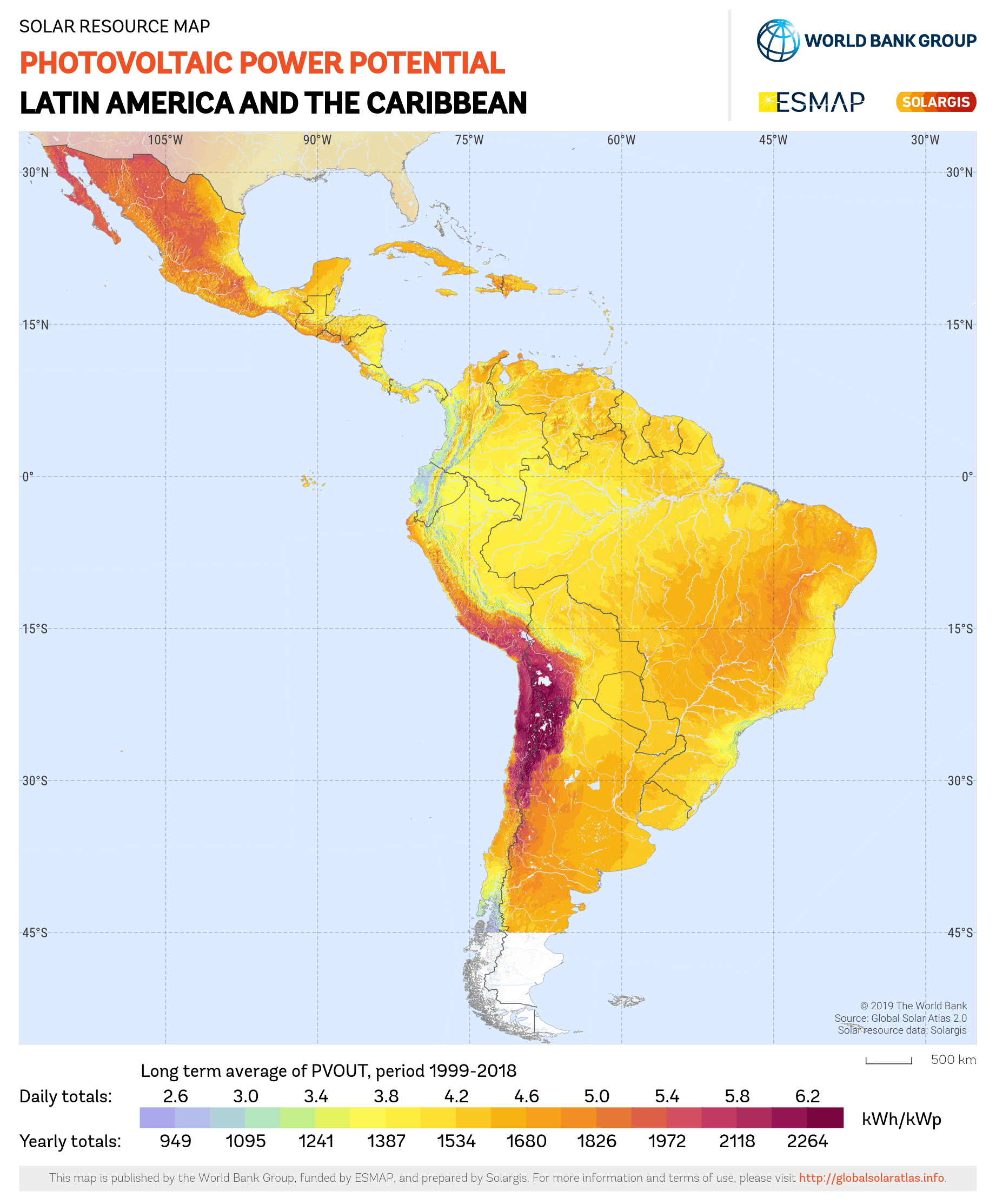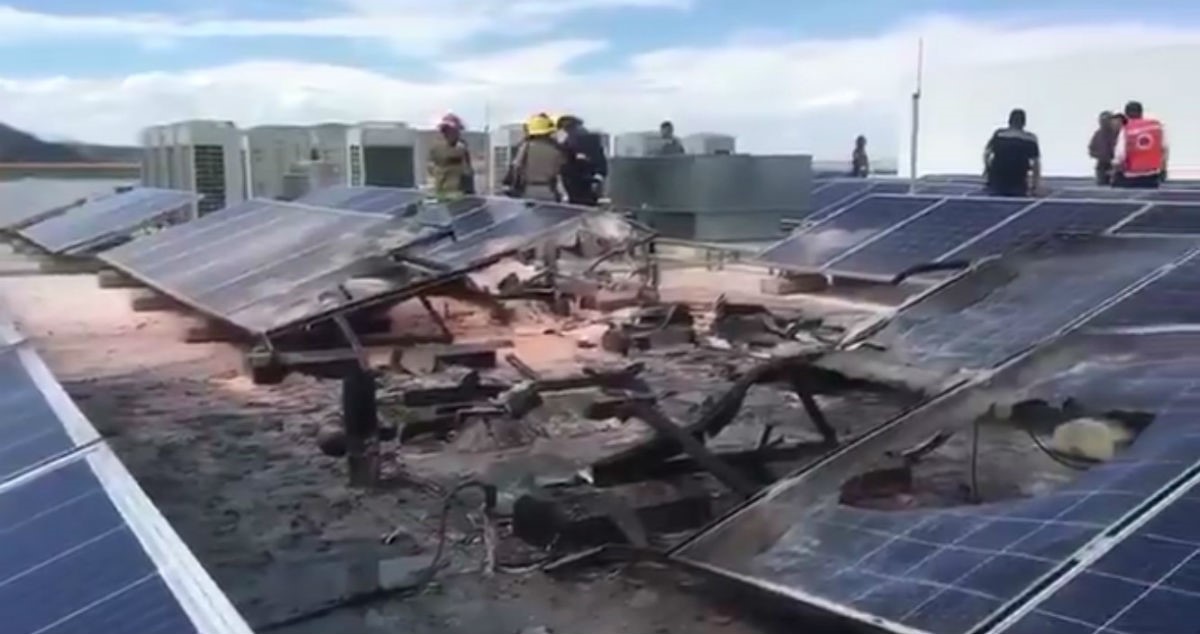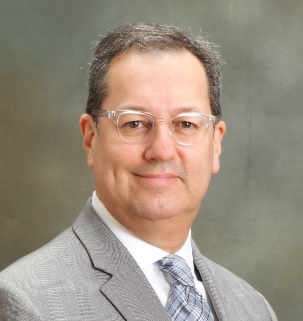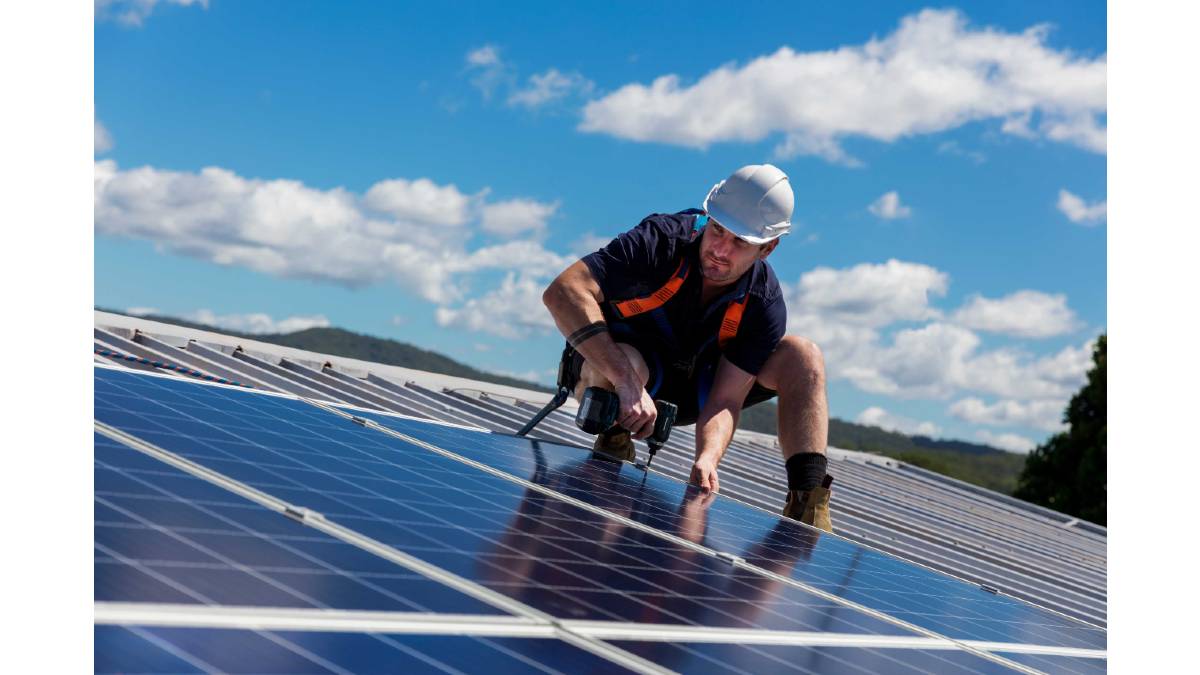In general, solar energy is quite safe, but there have been significant and recurrent fires.
By Jaime A. Moncada
Although the installed capacity of energy from Solar Photovoltaic Panels (PSFVs)1 is still very low, only enough to supply about 2% of the world's energy need, in recent years the growth of the installed capacity of this type of energy has averaged 27% per year.
The majority of installed capacity is concentrated in China, the European Union and the United States. In Latin America, the leaders in solar energy production are Mexico with 3,200 MW installed, followed by Brazil with 2,300 MW and Chile with 2,140 MW. Globally, the solar energy market with the highest penetration is Honduras with 14% of total energy production, followed by Chile with 7.1%, the fifth worldwide. In Mexico there is one of the largest solar installations in the world2, the Villanueva Photovoltaic Solar Park with a capacity of 828 MW.
But new legislation in Mexico, Brazil, Colombia and other countries in the region portends an excellent future for PSFVs. Other regulations allow this type of energy sources not only to be installed in large solar parks, but also allow the installation of PSFVs on the roofs of buildings, industries and homes, creating a cost-competitive source of renewable energy. According to studies published by the World Bank, the potential of photovoltaic energy in Latin America is excellent3. For example, the Atacama Desert in Chile has the highest solar irradiance potential in the world and almost every country in the region has a good level of solar irradiance.

Map of the potential of photovoltaic energy in Latin America (Image taken from http://globalsolaratlas.info)
Fires in Solar Panels: It is not surprising then that the installation of PSFVs is in vogue worldwide. On the one hand, it has been questioned whether the installation of these panels on the roofs of buildings is a safe practice from the point of view of their fire protection. On the other hand, there are the fires that have occurred in solar parks, questioning the best way to extinguish this type of event.
In general, solar energy is quite safe, but there have been significant and recurrent fires. The reality is that fires involving this type of technology are so new that the database used to analyze fires does not yet have the specificity to identify PSFV fires. However, several major fires have been studied resulting in recommendations for how current building codes can be improved.
One of those fires was the one that occurred in September 2013 in New Jersey, USA on the roof of a commercial cheese and sausage warehouse of 25,000 m2 of the company Dietz & Watson, where 7,000 panels were set on fire. The main problem firefighters had during the incident was uncertainty during the manual attack about the safety of their personnel. In the wake of this and other fires, the requirements for de-energizing the panels and accessing the panels changed.
In Europe, the spread of fires under the PSFVs4 is currently being studied and in Italy, where it is estimated that in 2012 there were about 700 fires involving photovoltaic panels, several of these fires have been analyzed and lessons learned have been applied that have reduced this type of incident5.

Fire of six PSFVs on the roof of the Federal Judicial City in Guadalajara on February 22, 2018 (Photo Courtesy of Bomberos de Zapopán).
Fire Hazards
According to the NFPA6 Research Foundation, the main risks of PSFVs on roofs are as follows:
1. Creation of combustible hidden spaces (Panels on combustible roofs) where fire protected by the panel can spread and compromise the effectiveness of manual firefighting efforts.
2. Increased possible causes of ignition under the panel by electrical failures that can be caused by physical damage, thermal and electrical stresses caused by direct current, and corrosion effects.
3. Hazards created through the maintenance activity of panels and ceilings (tool fall, stepping on cable ducts, etc.)
4. Delayed fire detection (outdoor fires outside the coverage of indoor fire detection systems) resulting in delays in notification and response by firefighters.
5. Reduced roof access space for firefighters.
6. Elimination of the possibility of opening holes in the roof by firefighters to extract smoke from the fire inside the building, due to the uncertainty about the electrical risk that PSFVs may have.
Requirements to date
When panels are installed on ceilings, current regulations require, in general terms, the following:
1. NFPA 1 requires rooftop solar panels to have a manual, easily accessible de-energization system that must be clearly identified. The most modern systems, which have rapid de-energization systems, must also be clearly identified and de-energized in 30 seconds.
2. This same standard requires that the panels on ceilings have accesses around the panels, the width of which varies depending on the size of the system, but at least 91 cm wide, to also allow enough space for the extraction of smoke through the roof.
3. The installation of panels, modules and wiring must be in accordance with the National Electrical Code (NFPA 70 or also called the NEC). This code requires panels to be listed.
4. NFPA 5000 indicates that rigid panels installed on ceilings must meet one of the following approval standards (listing):
• FM 4478, Approval Standard for Rigid Photovoltaic Modules.
• UL 1703, Standard for Flat-Plate Photovoltaic Modules and Panels, and UL 2703, Standard for Safety for Mounting Systems, Mounting Devices, Clamping/Retention Devices, and Ground Lugs for Use with Flat-Plate Photovoltaic Modules and Panels.
5. The UL 1703 standard tests the panel's Flame Spread Rating in the laboratory. The reason is that building codes require the panel to have the same Flame Propagation Rating as that required for the roof. These tests limit the propagation of the flame from 1.9 m2 to 3.7 m2 depending on whether the classification is A, B or C.
Risk in Latin America
The situation in Latin America is somewhat different from that in the United States. Although I'm not sure if the problem in our countries is less or more serious than in United Stadiums, the problem is certainly different and a fire protection engineering consultant should review the design and installation, especially in large facilities. The main topics to be evaluated are:
1. If the panels that are being used have approval following European or American standards, but in many cases do not have any type of list or recognized approval. Although the top of PSFVs is made of tempered glass, their bottom may contain combustible encapsulants. This should be evaluated before the purchase of the panels.
2. Evaluate the slope and completion of the roof. The roofs of buildings in most of Latin America are flat, which make PSFVs safer from the point of fire protection than those installed on sloping roofs more prevalent in places where there is snowfall. But in many countries asphalt fabric is used to waterproof the roof, which introduces an additional risk.
3. Include in the design stage clear and effective methods of rapid deenergization.
4. Include safe access for firefighters and operators in the design.
5. Evaluate whether the new PSFV system can be installed on an existing roof, or whether the roof should be coated with non-combustible elements.
6. The training of firefighters is another point that requires training at the local level, in order to reduce potential electrocution fatalities during extinguishing operations.
7. Finally, hire an installer with adequate technical knowledge and establish inspection and maintenance protocols.
Firefighter Training: The risk of electrocution should be assumed to be "always present" during the initial attack of firefighters during a fire. There is no way to easily assess whether electrical circuits are still active. As long as PSVFs are exposed to light, they continue to produce potentially lethal amounts of electricity. The PSFVs and associated wiring leading to the isolation switch remain "active," presenting an ever-present electrical hazard to firefighters.
As a result of this problem, Underwriters Laboratories (UL) conducted a research program and the findings of this study are being used for fire department training. This study, generally speaking, concludes that the danger of electric shock due to water application depends on the voltage, conductivity of the water, distance and spray pattern. A slight fog pattern (a cone angle of more than 10 degrees) significantly reduces current conduction, although salt water should not be used in living electrical equipment. A minimum distance of 6 m has been suggested to reduce the potential danger of collision from a source of 1000 Vdc to a level below 2 mA, which is considered safe.
Footer:
1. 2019 Snapshot of Global PV Markets, International Energy Agency (IEA), Report IEA PVPS T1-35: 2019.
2. The World's Biggest Solar Power Plants, 10 January 2020, www.power-technology.com
3. The Energy Solution Latin America Needs, New York Times, February 1, 2018.
4. Fires in Photovoltaic Systems: Lessons Learned from Fire Investigations in Italy, SFPE Emerging Trends, Issue 99, 2015
5. Understanding the Hazard of Solar Array Installations, SFPE Europe Conference on Fire Safety Engineering, 5-6 February 2018
6. Property Insurance Research Group Forum on PV panel Fire Risk, The Fire Protection Research Foundation-NFPA, June 9, 2014.
 * Jaime A. Moncada, PE is a director of International Fire Safety Consulting (IFSC), a fire protection engineering consulting firm based in Washington, DC. and with offices in Latin America. He is a fire protection engineer graduated from the University of Maryland, co-editor of the NFPA Fire Protection Manual, Vice President of the Society of Fire Protection Engineers (SFPE). Moncada's email address is [email protected].
* Jaime A. Moncada, PE is a director of International Fire Safety Consulting (IFSC), a fire protection engineering consulting firm based in Washington, DC. and with offices in Latin America. He is a fire protection engineer graduated from the University of Maryland, co-editor of the NFPA Fire Protection Manual, Vice President of the Society of Fire Protection Engineers (SFPE). Moncada's email address is [email protected].



























Leave your comment